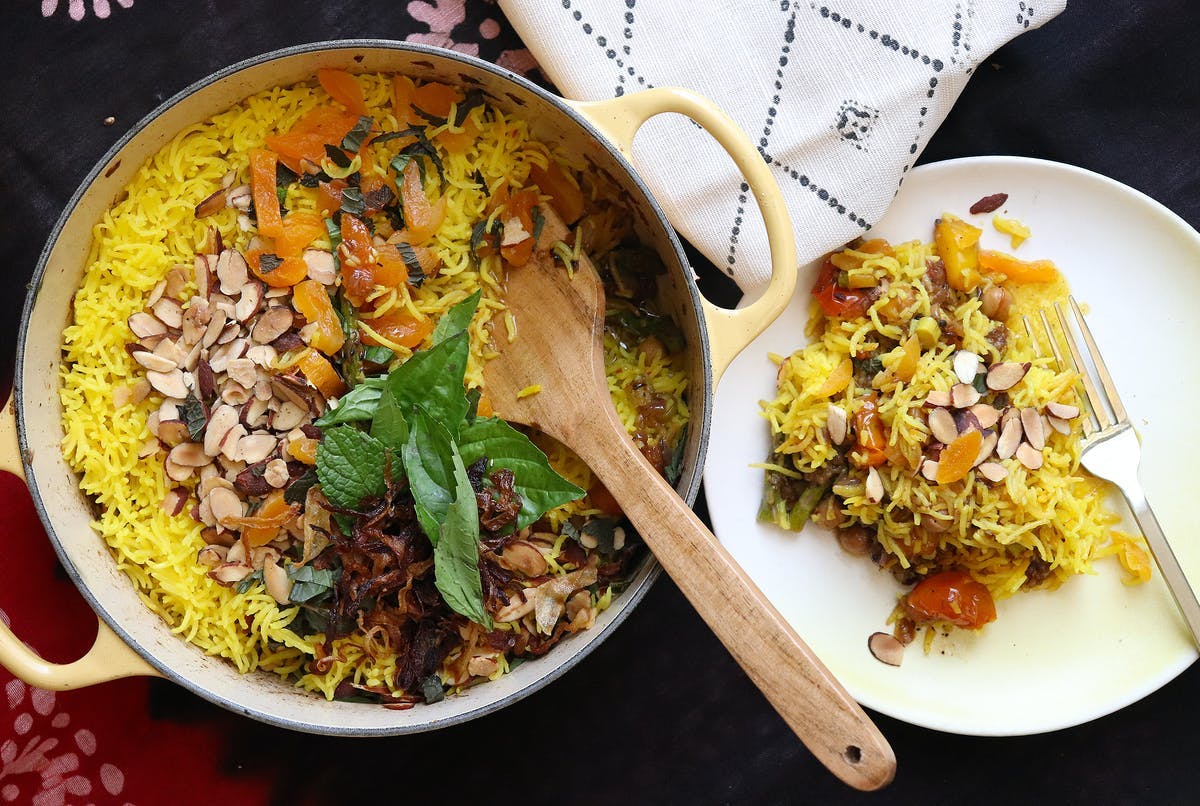Biryani

Photo: Ajna Jai / Contributor
Last weekend, while meandering through the farmer’s market, a young lady came up to me, tugged on my sleeve and whispered in my ear,” Please! Do a biryani class or teach us how to make one!” I was surprised, I thought biryani was too complicated for most. Maybe it still is, but pandemic nesting has certainly expanded the cooking skills of many. In any case, I am thrilled to share with you a roadmap to a biryani, a luxurious layered rice dish created by Persian and Indian gourmands during the decadent Mughal era of India.
First, the hallmark of a biryani, which is usually consumed on weekend lunches or late-night celebratory dinners, is that every component is cooked separately and brought together at the end. In a country where recipes for the same food changes every few miles, there are umpteen variations of biryani. Often garnished with fried onions, the north Indian ones are usually decadent with meat and rich with ghee, aromatic spices, caramelized onions, nuts, and dry fruit. The South Indian biryanis are redolent of coconut, kari leaves, black pepper, and cardamom, which grow wild in that region. Biryani usually starts with marinated meat, chicken, vegetables, or beans slow cooked with warm spices, onions, garlic, ginger to make a base masala. Tomatoes, yogurt, or coconut can be added next. On the lighter side, one can forego the onion masala and make a vibrant fragrant green herb masala, like a salsa verde or pesto (minus the cheese) for quick cooking seafood or vegetable biryanis. Rice is usually prepared separately, can be cooked in stock or just plain water – saffron and/or warm spices like a large stick of cinnamon, mace flowers or bay leaves can be added to the rice. I usually cook the rice with oil rather than ghee or butter as the oil facilitates the flakiness of the rice and prevents it from getting sticky. It is best to make the rice last as freshly cooked hot rice is placed over the base masala topped with nuts and dry fruits, tightly sealed, and allowed to rest for at least 20 to 30 minutes for all the flavors to meld. Here is a recipe for a simple garbanzo and vegetable biryani that can be easily adapted to the addition of meat.

